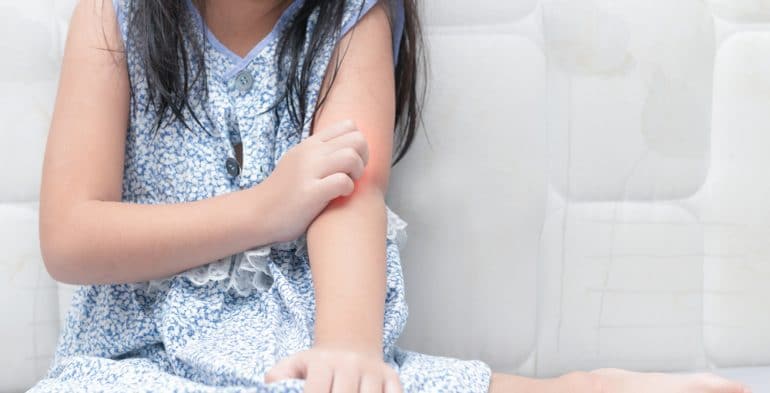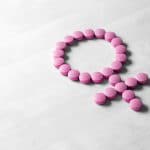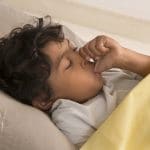
Psoriasis is characterized by red, scaly patches on the skin. It’s a common skin problem and usually runs in families. Children are less likely to suffer from this than adults..
Psoriasis causes
Psoriasis is caused by excessive inflammation in the skin .This causes rapid growth and shedding of skin cells, which build up into red and scaly patches. It is an auto-immune disease which means the body is having an un needed immune response and damaging itself.
Psoriasis is a genetic condition, which means it runs in families.
Thankfully, it isn’t contagious.
Psoriasis symptoms
The symptoms of psoriasis are red patches of skin and silver scales. These patches can be very itchy, like eczema, and children should be discouraged from scratching. This can lead to abrasions that may become infected.
Psoriasis can come up anywhere on the body, but it most often comes up on the scalp, knees, elbows, belly button and between the buttocks. If you get on your finger or toe nails, they might look pitted.
You can get psoriasis at any age. In young children it might come up in the nappy area, and you might think it’s nappy rash.
Your child might get a spotty type of psoriasis after a mild respiratory infection – for example, tonsillitis. This type of psoriasis usually only lasts for a few months before fading.
When to see your doctor about psoriasis symptoms
If your child has a rash that lasts for more than a week Baby-Arabia recommends visiting a doctor.
Your doctor might refer your child to a pediatric dermatologist or skin specialist, for further assessment.
Psoriasis treatment
There are many treatments that can make the rash go away and reduce symptoms but there is no permanent cure.
Treatment for your child will depend on age, the area of the body that’s affected and the severity of the symptoms.
Treatment involves ointments and creams, including cortisone, tar preparations and vitamin D creams. If your child has widespread psoriasis, a course of ultraviolet B light might help.
Sometimes if the condition is very bad, your doctor might prescribe an immunosuppressant drug or an injectable biologic agent.
If your child has psoriasis you should moisturize their skin. Use simple moisturizers like Vaseline, E45 or aqueous cream. This will help the skin growth and shedding rate come back to normal levels.







